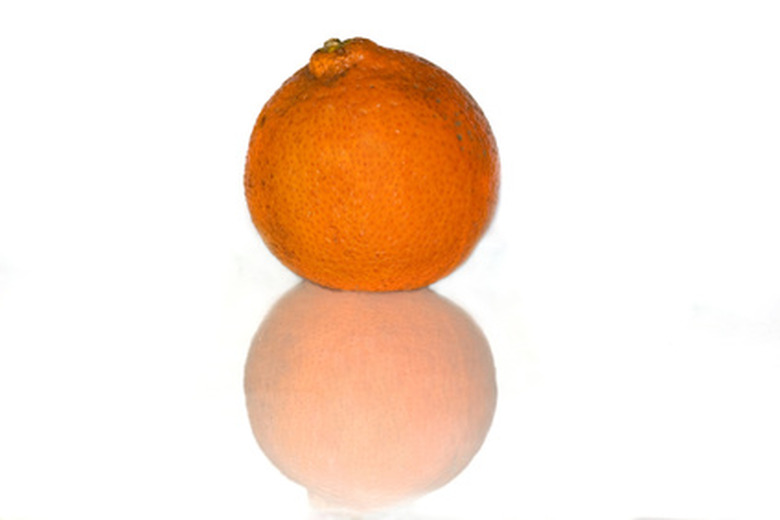How To Propagate A Calamondin Orange
Things Needed
- Clean, sharp knife
- 4-inch clay pot
- Sandy potting soil
- Powdered rooting hormone
- Plastic drinking straw
- Clear plastic bag
- Toothpicks
The calamondin thrives as a glorious, colorful indoor houseplant or as a sturdy outdoor specimen in appropriate climates. Sometimes referred to as miniature orange tree, this plant grows easily from seed. That's not the preferred method of propagation for the impatient gardener, however, who must wait up to three years to see the first fruit. Growing this plant from a cutting delivers rapid, dependable results. In fact, Citrofortunella microcarpa propagates from cuttings so readily that the plant commonly sets fruit while still in the rooting stage.
Step 1
Choose a healthy calamondin tree to take your cutting from while it's actively growing during the spring or summer. This slip will grow into an exact clone of the parent, so pick an attractive one that you like. Use a clean, sharp knife to remove a tender young stem about 8 inches long. Keep it cool and moist.
- The calamondin thrives as a glorious, colorful indoor houseplant or as a sturdy outdoor specimen in appropriate climates.
- Choose a healthy calamondin tree to take your cutting from while it's actively growing during the spring or summer.
Step 2
Fill a 4-inch clay pot to within ½ inch of the rim with a good sandy potting soil. Set it in a shallow container of warm water until the surface soil feels moist. Remove the pot from the water and allow it to drain for about two hours.
Step 3
Cut all of the leaves and buds from the lower half of the calamondin cutting. Moisten the bottom 1 inch with water and dip it into powdered rooting hormone. Plant it deep enough in the prepared pot to cover the treated end of the stem. Firm the soil around the cutting.
- Fill a 4-inch clay pot to within ½ inch of the rim with a good sandy potting soil.
- Plant it deep enough in the prepared pot to cover the treated end of the stem.
Step 4
Stick a plastic drinking straw into the soil about 1 inch away from the cutting. Seal the pot in a clear plastic bag, which will provide the necessary humidity. The straw will keep the bag from clinging to the cutting if it happens to sag. Poke six or eight small holes in the bag to allow for air circulation.
Step 5
Set the cutting in a brightly lit, warm spot out of direct sunlight. A windowsill or the top of your refrigerator are good choices. Check the soil every day to make sure that it doesn't dry out. It should remain evenly moist but not wet or soggy at all times.
- Stick a plastic drinking straw into the soil about 1 inch away from the cutting.
- Seal the pot in a clear plastic bag, which will provide the necessary humidity.
Step 6
Tug gently on the stem of the cutting after about two weeks. If it resists your pull, it is rooting. If it doesn't resist, secure it back into the soil and replace the bag. Check again in two more weeks. Once the cutting roots, remove the plastic bag for good and set the plant on a very bright windowsill out of direct sun.
